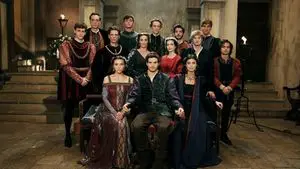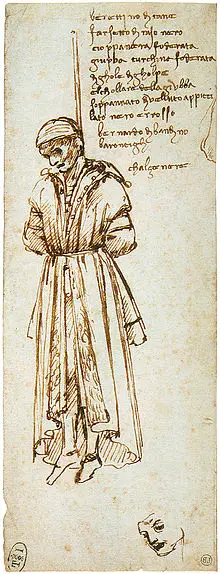How Historically Accurate Is the Medici Season 2
The Medici has recently been released and it cover the period of Lorenzo the Magnificant (Lorenzo de' Medici), one of the most influential Medici family members who ruled or influenced Florence and the birth of the Renaissance. The period covered is around 1469-1477, with the series culminating in the Pazzi conspiracy on Easter Sunday April 26, 1478.
The Key Characters
Lorenzo the Magnificant: Lorenzo is depicted as a smart and wise leader of the Medici family. His father, Piero di Cosimo de' Medici dies at the beginning of the series, in 1469. His father was shown as somewhat a weak character who could not always deal well with all the intrigues of the Signoria, which was the seat of government and ruling body in Florence. The Medici bank is also in a weak position and on the brink of bankruptcy. Lorenzo is energetic, ambitious for his family, and displayed traits like his grandfather Cosimo Medici by supporting the arts, with the series concentrating on his patronage of Sandro Botticelli. He is shown as having Florence's best interest in mind, although in reality he often did promote his family above all else. He could also be ruthless, although he is shown as preferring to work with his rivals and give them a chance.[1]
Giuliano de' Medici: Guiliano is the brother of Lorenzo. He is shown as a skilled fighter, handsome, and a someone who always showed interest in women, refusing to settle down and instead bedding different women, including Simonetta Vespucci, a renowned beauty who was the wife of a prominent noble in Florence. In fact, he appears to fall in love with Simonetta and this begins to create problems for the Medici after Simonetta's husband learned of the affair and jails his own wife. His youthful love of life and handsome appearance influences Botticelli to paint him as his Mars character, but that is not certain. Giuliano did father an illegitimate child, with another woman, who later became Pope Clement VII, but for this was not even brought up by the series despite the historical significance of this. Clement VII was the pope who presided over the fragmentation of Christianity during the Protestant Reformation. Giuliano was killed in the Pazzi conspiracy and that was depicted by the series.[2]
Clarice Orsini: Clarice was shown as a nun in training at the beginning of the series who is then arranged by Lorenzo's mother, Lucrezia, to marry Lorenzo. While reluctant, and shown as somewhat naive and pious individual, she complies with this marriage as she sees it as God's chosen path for her. At first, she is not happy, as Lorenzo continues to have a relationship with a nobleman's wife after his marriage. Eventually, she has Lorenzo stop this affair and she begins to become more influential in Lorenzo's life. The couple eventually grow more fond of each other and they both help each other as they plan the family's affairs.[3]
Sandro Botticelli: The series depicts Botticelli as a well-regarded painter patronized by the Medici. The series depicts the painter as being inspired by Simonetta Vespucci, who inspired Venus and Mars and later Primavera, with his later Birth of Venus painting alluded to as also inspired by her. The actual history of these paintings is not certain, as Venus and Mars may have been painted much later than what was shown in the series. Nevertheless, Simonetta is a possible muse inspiring Botticelli's depiction of her as Venus, but that is also disputed by historians. Giuliano is purported to be the one inspiring Mars, but he had died long after this, although the series showing him posing, along with Simonetta, for the painting. None of this is historically clear, but some historians do accept the two as inspiring the well-known painting.[4]
Francesco de' Pazzi: Francesco is one of the main characters of the Pazzi family, who are rivals to the Medicis and resent their control and power over Florence. Francesco initially befriends Lorenzo, as he believes his uncle Jacopo de' Pazzi did not have Florence's best interest and too obsessed against the Medici. However, over time he becomes disenchanted with the Medicis as he sees them as power hungry. He is married briefly before he sends his wife away, but this may have never happened. Francesco eventually reunites with his uncle Jacopo and they together launch the Pazzi conspiracy on Easter Sunday in 1478. Francesco succeeds in killing Guiliano but the conspiracy fails and he is executed along with the other conspirators on the walls of the Signoria. The depiction of the brief friendship between Francesco and Lorenzo is likely inaccurate. He was also dragged from his house and killed, while in the series he was shown as being captured after the conspiracy was launched in the well-known Duomo of Florence.[5]
Jacopo de' Pazzi: Jacopo is depicted as the real head of the Pazzi family and obsessed with overthrowing the Medici family. He was shown as finding new ways to obtain power for himself and the Pazzi. While there might be some truth to this, he was also, historically, known to have patronized the arts and commissioned works such as the Palazzo Pazzi in Florence. His conspiracy launched with Francesco fails ultimately, after many other less violent attempts to topple the Medici. Jacopo is depicted as a cunning and scheming man, although in reality the problem with the Medici probably dealt with the fact that both families were power hungry.[6]
Key Plot
The key plot of the series is Lorenzo beginning to try to unite some of the main city-states of Italy, in particular Milan and eventually Venice, together to form a stronger alliance for these cities and help their businesses, including the Medici bank that is struggling as it is overextended. In addition, the Medici lost their Papal account and their bank is threatened with insolvency as the Pazzi conspire with the Pope (Pope Paul II and later Pope Sixtus IV) to stop the Medici. The Medici try to forge an alliance with Francesco Pazzi, as they see a split within the Pazzi family. This initially works but then begins to fail. The alliance with Milan is also broken up with the murder of Duke Sforza of Milan. The Pope is also used to threaten families from forming alliances with the Medici. However, there is a desire to smooth tensions and the Pope gets involved by expressing his desire for peace. Without seemingly knowing or at least not knowing in detail, Pope Sixtus has Cardinal Riario send a delegation to Florence to try to sooth relations with the Medici and resolve the conflict with the Pazzi. This deligation is sent with armed guards who are actually sent to conspire against the Medici and take over the Signoria. The Pazzi form alliances with some of the powerful families of Florence so they can also take power after killing the Medici while turning families against the Medici. The choice of Easter Sunday was chosen to launch the conspiracy because the Medici will certainly be in the Duomo attending services. The Pazzi appear to show peace and reconciliation with the Medici but in reality attack the Medici in the Duomo during Easter. Giuliano is killed from behind by Francesco and his collaborators. However, they fail to kill Lorenzo, who is holed up in a small room in the Duomo with his wife and mother. Eventually, the people of Florence rally around the Medici and the conspirators are rounded up in the Signoria, where they tried to complete their conspiracy by taking authority over the city. Lorenzo also escapes the Duomo. The conspiracy now fails and the conspirators are captured and hung from the Signoria. Leonardo da Vinci, who was young and in Florence at the time, drew the hanging of one of the conspirators, who was Baroncelli (Figure 2).[7]
Assessment
The key events are accurate, in that the Pazzis did ultimately try to topple Lorenzo. The Medici's are shown as more benevolent, but that might be less accurate as most likely politics in 15th century Florence was likely ruthless with conspiracies launched by various sides. The events and people that influenced Botticelli, including two of his well-known paintings, may not have happened as shown, as the timelines do not match since his famous works were finished probably almost a decade later. Nevertheless, the importance of the Medicis in influencing the Renaissance, and the backstory of how they achieved their power over Florence as the Pazzi attempted to diminish their power, is true. The Pazzi were banished or killed after the conspiracy and ultimately the conspiracy they launched did prove to be their downfall.
Summary
Season 2 of the Medici is a fascinating and complex series that is highly entertaining. It has some historical relevance in that many key events and characters are true. However, it takes the liberty to mixup timelines and condenses some of the events, such as the death of Lorenzo's father and the events leading up to the Pazzi conspiracy. Surprisingly, Guiliano's son is never depicted, despite the fact he becomes an important historical figure himself.
References
- ↑ For more on Lorenzo and his life, see: Horsburgh, E. L. S. (2017). Lorenzo the Magnificent and Florence in Her Golden Age. Forgotten Books.
- ↑ For more on Giuliano, see: Jungić, J., & Leader, A. (2018). Giuliano de’ Medici: Machiavelli’s prince in life and art. Montreal: McGill-Queen’s University Press.
- ↑ For more on Clarice, see: Pernis, M. G., & Adams, L. (2006). Lucrezia Tornabuoni de’ Medici and the Medici family in the fifteenth century. New York: Peter Lang.
- ↑ For more on Botticelli, see: Lightbown, R. W. (1989). Sandro Botticelli: life and work (2nd ed). New York: Abbeville Press.
- ↑ For more on Francesco, see: Martines, L. (2004). April blood: Florence and the plot against the Medici. Oxford; New York: Oxford University Press, pg. 97.
- ↑ For more on Jacopo, see: Strathern, P. (2003). The Medici: godfathers of the Renaissance. London: Jonathan Cape, pg. 163.
- ↑ For more on the key events leading up to the main Easter conspiracy, see: (Martines, 2004).

